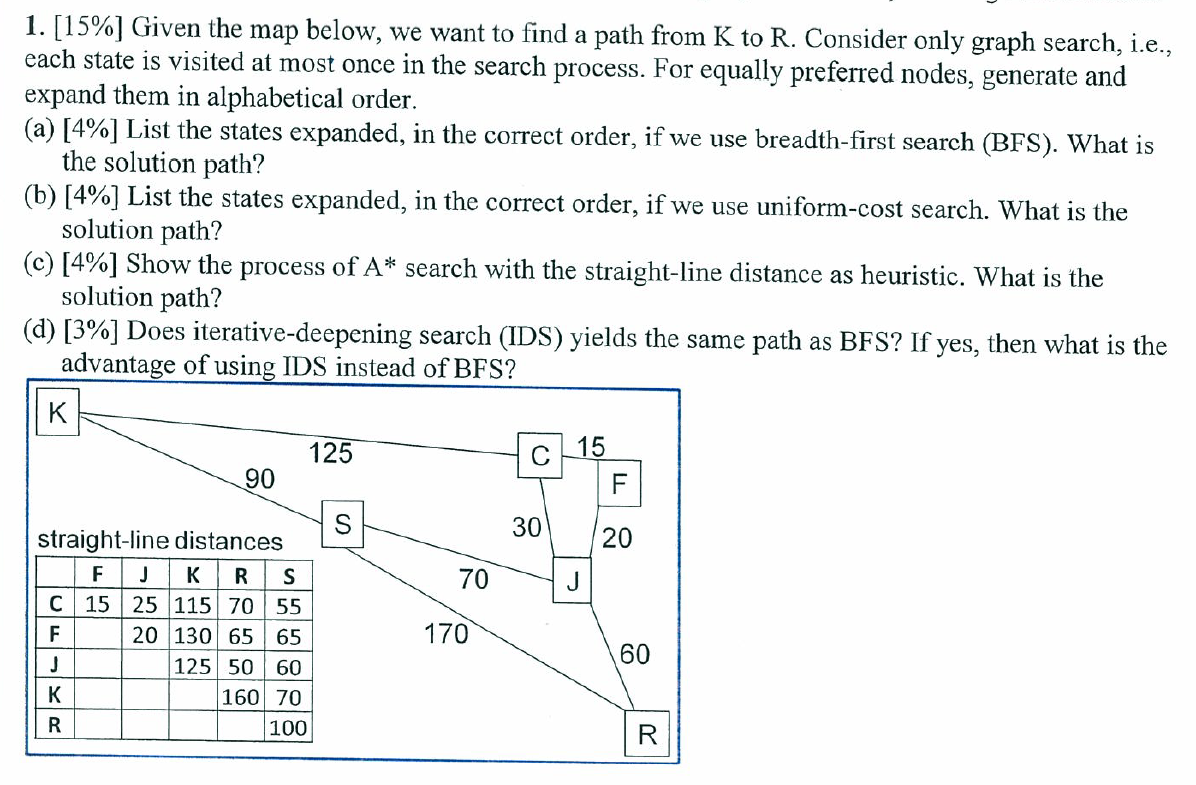Question
[AI_107A_B_1] 1. [15%] Given the map below, we want to find a path from K to R. Consider only graph search, i.e., each state is
[AI_107A_B_1]
1. [15%] Given the map below, we want to find a path from K to R. Consider only graph search, i.e., each state is visited at most once in the search process. For equally preferred nodes, generate and expand them in alphabetical order. (a) [4%] List the states expanded, in the correct order, if we use breadth-first search (BFS). What is the solution path? (b) [4%] List the states expanded, in the correct order, if we use uniform-cost search. What is the solution path? (c) [4%] Show the process of A* search with the straight-line distance as heuristic. What is the solution path? (d) [3%] Does iterative-deepening search (IDS) yields the same path as BFS? If yes, then what is the advantage of using IDS instead of BFS? K

Step by Step Solution
There are 3 Steps involved in it
Step: 1

Get Instant Access to Expert-Tailored Solutions
See step-by-step solutions with expert insights and AI powered tools for academic success
Step: 2

Step: 3

Ace Your Homework with AI
Get the answers you need in no time with our AI-driven, step-by-step assistance
Get Started


